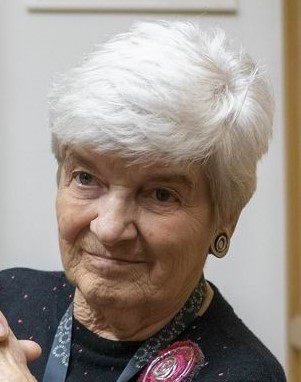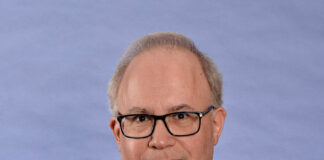It is with sorrow we must let everyone know that our highly esteemed and beloved colleague Dr Katalin Bíró-Sey, the former editor-in-chief of the Numizmatikai Közlöny (Numismatic Bulletin), the journal of the Hungarian Numismatic Society, passed away in the 89th year of her life. She left us unexpectedly, after a brief period of suffering, and we thought she would be with us for many years to come. She was the rock in this rapidly changing and forming world, the one who linked the past and the present.
Dr Katalin Bíró-Sey was a member of the generation that came of age in the 1950s, whose professional life took already place in the so-called Kádár-era that replaced the harsh dictatorship (Rákosi-regime), who lived and survived the 1956 revolution, and who spent her life quietly in the Hungarian National Museum and diplomatically, achieving international professional recognition in far from easy circumstances. She had a quiet, patient, one could say motherly nature, who always managed to calm down conflicts, solve serious disputes with her quiet words, and smooth over problems that arose.
She worked as a curator of the Ancient Coin Collection in the Coin Cabinet of the Hungarian National Museum until her retirement and was a lion’s share of the revision and reorganisation of the whole Collection of the Cabinet alongside Professor Lajos Huszár. She has published numerous coin finds in the Numizmatikai Közlöny and various archaeological journals: among others, the Hódmezővásárhely-Szikáncs 5th century solidus hoard, about which one of her first publications appeared in German in Dresden, GDR in 1971 (Frühbyzantinische Solidus-Fund von Szikáncs. Jahrbuch der Staatlichen Kunstsammlungen, Dresden 1970–1971). She has given several presentations on the importance of the hoard at international conferences (London 1986, Spoleto 1988). Unfortunately, most of her works have only been published in Hungarian with a foreign-language summary. Her first work to be published in English was the publication of the coin finds of Brigetio in 1977. (Coins from the identified sites of Brigetio and the questions of local currency. Budapest, Magyar Nemzeti Múzeum /Hungarian National Museum/ 1977.) She participated in the launching of the Hungarian Fundmünzen programme, (Die Fundmünzen der römischen Zeit in Ungarn. Bd.1. Komitat Fejér. Bonn-Budapest 1990.) Her other field of expertise was Celtic coinage in Hungary. In 1984 her book was published in the BAR series (Oxford) with the title of “Bronzemünzen-Prägung im südlichen Transdanubien”. One of her last publications was with co-authors the Late Roman bronze coin hoard of Tokorcs in 1998 (Erläuterung des Bronzfundes von Tokorcs in Westungarn. Budapest).
She was involved in university education and in the training of the appraisers of the BÁV (Commissary Company). At national and international conferences, she presented the results of ancient coinage in Hungary, which are largely due to her work. She also did not forget the wide range of people interested in Roman coinage, for whom she wrote useful books and gave numerous educational lectures at events organised by the Hungarian Numismatic Society and the Association of Coin Collectors.
From 1993 on she opened a new chapter of her life and at the age of nearly sixty she took over the care of the ancient coin collection of the Royal Coin Cabinet in Oslo and spent ten long years in the Norwegian capital, where she also enhanced the reputation of Hungarian numismatics and built up professional contacts of the Hungarian colleagues. Upon returning to Hungary, she continued to work in the Collection of Coins and Medals, helped the staff, and was an active member of the Hungarian Numismatic Society, which she supported even financially until the end of her life.
It is with a heavy heart that we say goodbye to her, and her name will always remain among the greats of numismatics.




